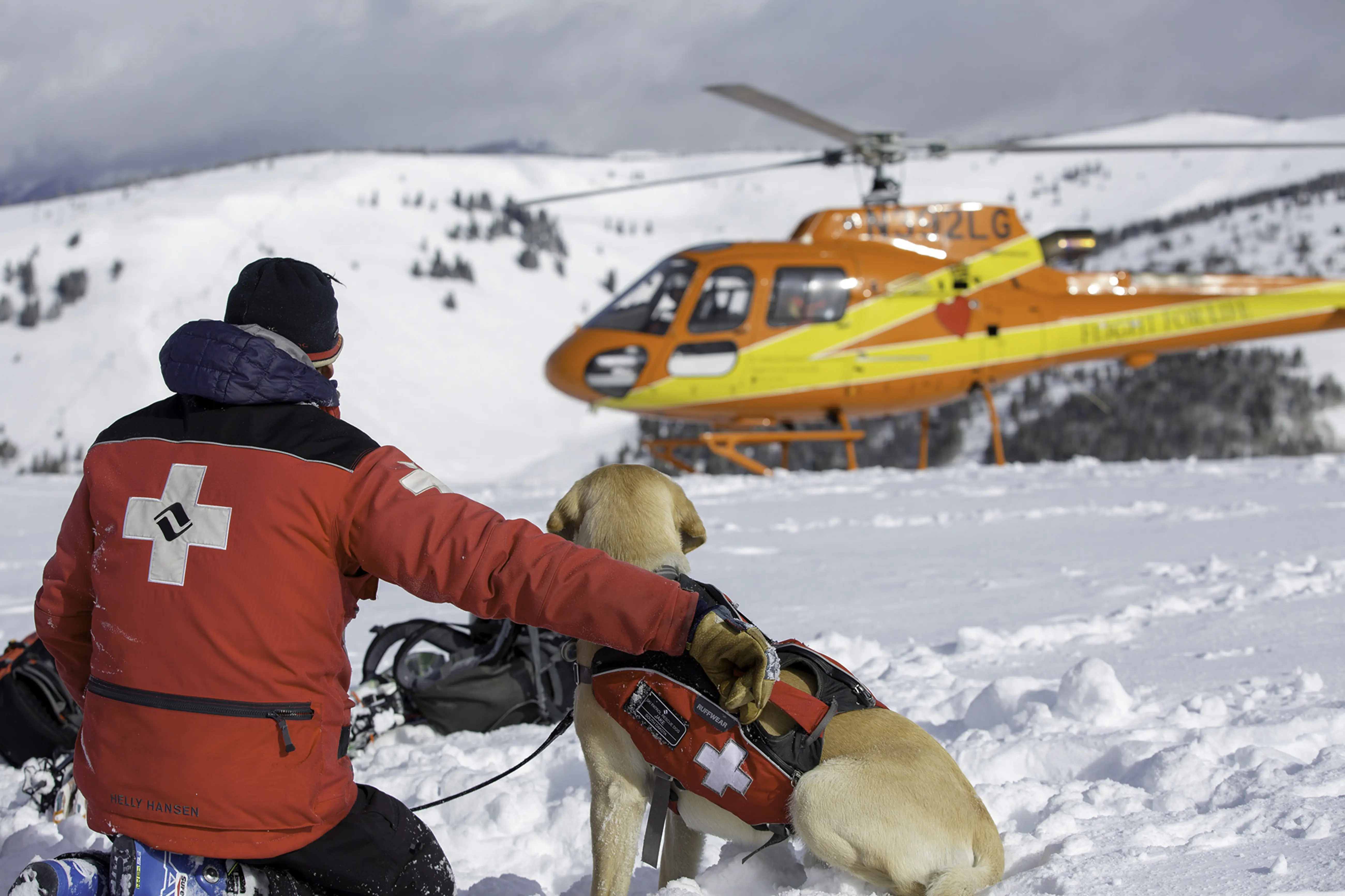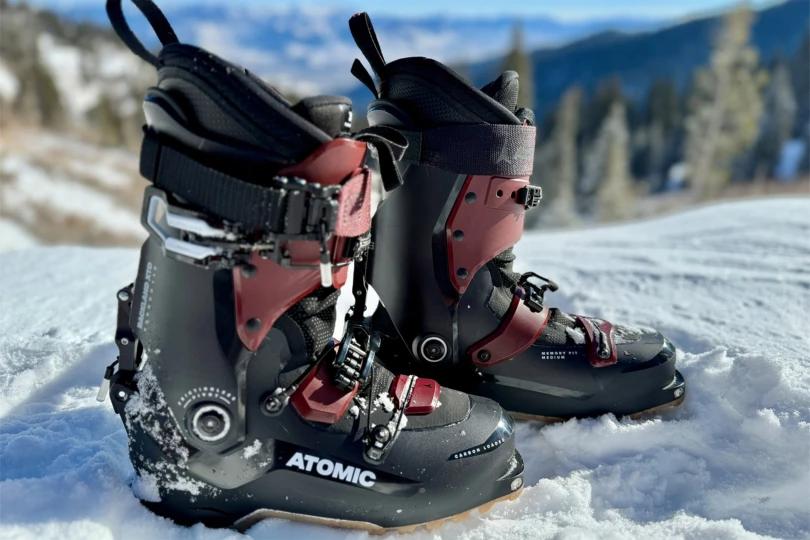Did Anon make the perfect, seamless marriage between helmet and goggle with the Echo and M4? We reviewed both, together, to find out.
Every skier and snowboarder knows that helmet and goggle compatibility is key to happy days on the hill. An awkward fit is not only uncomfortable, but it’s also downright unfashionable. “Gaper gap,” the dreaded chasm between helmet and goggles, could well be the primary cause of breakups in ski towns.
That’s why I was stoked to get my hands on Anon’s M4 Goggles and Echo MIPS Helmet for review. Whenever the same brand produces both helmet and goggles, my hope is the fit will be completely seamless.
Read on for a review of the M4 goggles and Echo helmet, and a rundown of how well these two pair on a pow day.
Anon M4 Goggles Review: Best-in-Class Optics
The M4 goggle is the fourth rendition of Anon’s Magna-Tech goggle line. In short, of the goggles I’ve tested to date, it’s my favorite pair. Even when compared to top picks from category kingpins like Oakley, Smith, Dragon, and Poc, the Anon M4 wins out.
It’s a lofty but well-earned accolade, thanks to the M4’s ultra-wide field of vision, innovative lens tech, and effortless interchangeable lens system. Even at $300, it lives up to the price.
Peripheral Vision
I tested the Black and Sonar Green Toric Lenses and came away thoroughly impressed by the wide peripheral field of vision. While testing these goggles for 2 weeks in the deep-snow mecca of Japan, I often found myself ripping at speed through tight trees, and never once did I crave a more expansive field of view.
Anon claims the M4 offers the “largest field of vision ever in an Anon goggle and one of the largest in any goggle on the market.”
Zeiss Lenses
Additionally, the lens quality itself is second to none. Zeiss, a lens heavyweight celebrated by photographers and snowboarders alike, created Anon’s Sonar lenses. In my testing, the contrast was crisp and definition top-notch.
I mainly rode with the Sonar Green Toric Lens, which scores a 23 percent on the Visible Light Transmission spectrum. That means it lets 23 percent of visible light through the lens, so you’ll want a bit more tint on brilliant, bright days.
But it’s a versatile lens that’s primed for days when clouds, shadows, and sun are all a part of the equation.
‘Toric’ Lens Shape
The M4 sports either standard cylindrical lenses or “toric” lenses, which Anon notes more closely mimic the shape of the eye. Toric lenses are molded similarly to spherical lenses, but the vertical curve is less dramatic than the horizontal one. It’s so subtle, you probably wouldn’t notice the nuance on your own.
However, the shape offers both excellent peripheral vision and expansive vents (the only time I fogged these lenses up I was post-holing waist-deep Japow).
Dual-Lens Compatibility
What’s most intriguing, though not exactly useful, is that the M4 is compatible with both cylindrical and toric lenses. This is a new development in the goggle game, and while it’s undoubtedly innovative, I’m not sure exactly who it’s going to help.
I prefer toric lenses, so I’d never consider swapping to cylindrical. Also, while cylindrical goggle options tend to be cheaper, the M4 costs the same whether you opt for cylindrical or toric lenses.
Given the M4’s price is higher than pretty much any goggle on the market, going with cylindrical lenses doesn’t make much sense in my opinion, unless you like to swap styles for fashion’s sake.
Magna-Tech Interchangeability
While the jury remains out whether or not the dual-lens compatibility is worthwhile, there’s no debate the M4’s Magna-Tech lens-swapping system is freakin’ phenomenal!
A total of 18 strong magnets set into the frame and lens create a tight, reliable bond. I rocked the M2 goggles, which have only 16 magnets, over the past couple seasons, and the bond of the M4 feels notably stronger. Hold the lens close to the frame, and it wants to jump out of your hands and into place.
When it’s time to swap lenses, simply grip the frame in one hand, the lens in the other, and apply pressure. Unlike many interchangeable lens options on the market, the M4 lens has ample real estate along the side of the lens, so you can grasp the edges without babying the lens, or worrying you’ll leave a thumbprint or scratch the surface.
Comfort
The padding on the M4 comprises thick, cushy, triple-layer foam, wrapped with anti-fog face fleece that feels comfortable against the skin. In conjunction with the vents, the M4 rarely overheats or fogs up. Overall, these goggles were comfortable and I had zero complaints.
Magnetic Facemask Integration
The M4 comes with Anon’s MFI (Magnetic Facemask Integration). Essentially, it’s a buff equipped with an unobtrusive magnetic nose bridge to seal out snow and minimize the chance of freezing your schnoz.
If you find you’re always yanking your buff back into place, this accessory may help justify the M4’s steep $300 price.
Anon offers a full line of MFI-equipped face protection for varying conditions. Check out the options here.
Anon Echo Helmet Review
The $190 Echo helmet is one of Anon’s premium options. At 500 g, it makes for a relatively lightweight, aggressively designed helmet with ample venting, a Boa adjustment system, and an industry-standard MIPS safety feature.
Overall, I was pleased by the protection and ventilation of the Echo, though I did have a gripe with the Boa adjustment system.
Ventilation & Style: 2 Thumbs Up
Usually, helmets that have 15 vents are damned to look goofy, but Burton pulled it off. The Echo’s vents are obvious without being ostentatious, set into shallow channels along the body of the molded shell. Style-wise, it seems, the number of vents actually adds to the Echo, rather than subtracting from it.
A plastic ventilation toggle sits just above the Boa adjustment dial and the goggle clip, and it proved easy to operate even while wearing mittens in a blizzard. Open the vents if you’re overheating, close ‘em if the temps drop, and go halfway if you just can’t make up your mind.
Boa System Issues
While the Boa system makes tightening easy, it was also my one source of frustration with this otherwise solid helmet.
When you crank the dial, it tightens wires throughout the liner and essentially brings the rear cup of the helmet closer to the front, subsequently making the fit snugger. However, the wire casing kept getting in my way, causing a painful pressure point over my ear.
Anon Echo Helmet-M4 Goggle Compatibility
Unfortunately, that pesky pressure point actually sacrificed compatibility with the M4 goggles. One of the best parts of the M4 system is the included magnetic neckwarmer. But while wearing the Echo helmet, I could only enjoy a pinch-free fit while wearing a balaclava, so I had to ditch the MFI neckwarmer.
Anon also offers a full line of MFI accessories for sale separately (surprise: they can get expensive), but I want the ability to ride without a balaclava on warm days too. For what it’s worth, I spoke with a fellow gear tester who has also been trying out the Echo, and he didn’t have the same problem.
Additionally, the fit between the Echo and the M4 leaves a little to be desired. I found a sliver of unwanted wiggle room between helmet and goggle. Were the pieces from different brands, I would have been satisfied with the fit and compatibility. However, seeing as how they were both from Anon, the pairing didn’t meet my high (read: seamless) hopes.
That said, as a standalone pair of goggles, the Anon M4 proved a quality option that I highly recommend. At $300, the price may cause sticker shock. But if you’ve been trying (and failing) to find that perfect pair of goggles year after year, the extra spend may be well worth it.
And while I’m not nearly as smitten with the Echo, the helmet will make many perspiration-prone skiers and riders stoked with its adjustable ventilation system. Just don’t expect the perfect pairing — that dream remains elusive.
















